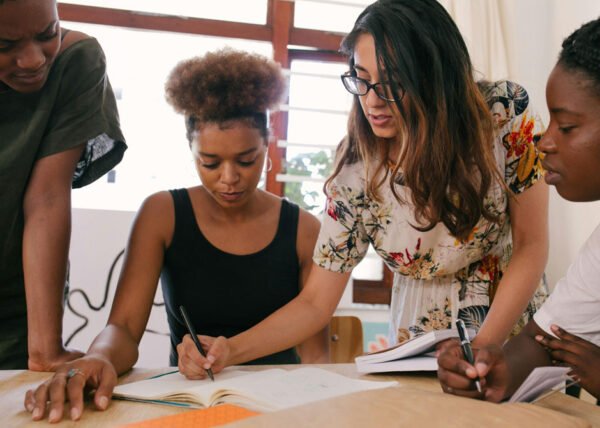The Role of AI in Graphic Design

In the evolving world of digital creativity, AI graphic design tools are transforming the landscape of visual communication. These innovative technologies are not only reshaping how designs are created but also expanding the possibilities for designers, allowing them to push boundaries and explore new creative horizons. Let’s delve into how AI is playing a pivotal role in the field of graphic design.
Enhancing Creativity and Efficiency
AI in graphic design serves as a powerful tool to enhance both creativity and efficiency. With AI-powered software, designers can automate repetitive tasks, such as resizing images or recoloring elements, freeing up more time to focus on the creative aspects of their projects. Additionally, AI can suggest design variations, offering new perspectives that a designer might not have considered. This synergy between human creativity and machine learning leads to a more dynamic design process, where exploring innovative ideas becomes faster and more fluid.
Adobe says, “Learn about the various AI tools made for graphic designers.”
Streamlining the Design Process
The integration of AI into graphic design workflows streamlines the entire design process, making it more efficient and less time-consuming. For instance, AI algorithms can analyze design trends and user preferences to provide recommendations that fit a project’s needs. This capability enables designers to make informed decisions quickly, reducing the time spent on research. Moreover, AI tools can automatically adjust designs based on certain parameters, such as platform requirements or branding guidelines, ensuring consistency across different mediums.
Personalization at Scale
One of the most significant advantages of using AI in graphic design is the ability to personalize designs at scale. In the context of marketing and advertising, AI can generate customized content tailored to individual user preferences, behavior, and demographics. This level of personalization enhances user engagement and improves the effectiveness of marketing campaigns. For designers, this means the opportunity to create more impactful designs that resonate with a wider audience without the need to adjust each element for different users manually.
Expanding Creative Possibilities
AI opens up a realm of creative possibilities that were previously unimaginable. Using generative design algorithms, AI can create unique patterns, textures, and layouts that inspire designers. These AI-generated elements can be incorporated into larger design projects, adding a layer of complexity and originality. Additionally, AI can simulate a variety of artistic styles, enabling designers to experiment with different aesthetics and incorporate them into their work, thus broadening their creative repertoire.
The Future of Design Collaboration
As AI technology continues to evolve, its role in facilitating collaboration between designers is becoming increasingly important. AI-driven platforms can act as collaborative spaces where designers can share ideas, provide feedback, and collectively refine projects. These platforms can also learn from user interactions, suggesting improvements and fostering a more cohesive design approach. Furthermore, AI can bridge the gap between designers and clients, translating client feedback into actionable design adjustments, thereby streamlining the revision process.
The role of AI in graphic design is multifaceted, offering enhancements in creativity, efficiency, personalization, and collaboration. As AI tools become more integrated into the design workflow, they open the door to new creative expressions and innovations.
For designers, embracing AI means staying ahead in a competitive industry and discovering new ways to bring their visions to life. The future of graphic design is undoubtedly intertwined with AI, promising a landscape where human creativity and artificial intelligence work hand in hand to create compelling, impactful designs.



